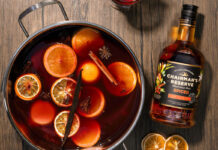Firms say customers will continue to seek out new beers in the on-trade
Beer is big news at the moment; from brewery mergers to the rise of craft, the category has undergone a serious upheaval over the last few years, as wave after wave of new brands and breweries have entered the market.
However, despite changes in the category continuing at pace, brewers are in agreement that some trends look like they’re here to stay.

The consumer demand for variety that has been credited with driving the craft beer boom isn’t going anywhere, brewers told SLTN, and premium beers with provenance look set to remain popular heading into 2016.
Paul Condron, marketing director at Tennent Caledonian Breweries, said beer sales in the Scottish on-trade “remain robust” and that the beer category will “always be the heart and soul of the on-trade in Scotland”.
Perceptions of the category have been shifting in recent years, according to Hugo Mills, sales and operational director for Molson Coors in Scotland.
Mills said the beer industry is currently “undergoing a golden age of revival, becoming cool again for the first time in many years”.
And he highlighted craft beer as one of the main reasons for this reinvigoration.
“A natural shift is occurring right across Scotland where we are seeing drinkers veer away from traditional lager brand names,” he said.
“Consumers are becoming more curious, more knowledgeable and far less brand loyal.
“Beer is now much more relevant to younger consumers and females; in the past it was recognised as a male drink, which is no longer the case.”
Katerina Podtserkovskaya of Diageo, the firm behind Guinness, said one of the main changes in consumer behaviour has been a greater focus on quality and provenance.
“Consumers are seeking a richer value or experience from what they consume,” said Podtserkovskaya.
“They are interested in the stories, ingredients and provenance of products and this is a trend we are seeing across food and drink as a whole, and it is influencing purchase decisions.”
David Scott, director of brands and insight at Carlsberg UK, added that beer drinkers are now “more open to experimenting” with different beer styles and said there are various ways licensees can take advantage of this.
“The vast range of beers now available to pub-goers, combined with the category’s popularity increase, demonstrates that variety is key when it comes to stocking produce,” said Scott. “In order to attract a wide customer base, operators should stock a core range of craft and world beers, premium ales and mainstream lagers.
“This comprehensive selection will allow the eclectic beer drinkers of today to experiment with the venue’s offering – motivating them to make repeat visits and trade-up to the more premium products.”
How beer is displayed in a pub was also highlighted by Scott as a key factor in driving sales, and he suggested publicans ensure their range is visible through the use of beer menus, chalkboards and other signage.
“Another successful way to drive penetration with customers is to promote beer and food matching,” said Scott. “Food and wine pairing has been a recognised trend for some time, however over recent years we have begun to unlock the opportunities within food and beer.
“By simply spending some time identifying beers that match well with dishes on an outlet’s menu, and promoting these pairings, publicans can create a real sense of excitement and interest amongst customers.”
Customers should always be at the heart of any beer range, according to Andrew Turner of Heineken.
“It’s important that licensees read the marketplace and take into account their location and customer footprint,” he said. “It’s therefore important to tailor your offering to suit your audience and satisfy their preferred types of drinking occasions.
“Take the time to engage with customers, ask them what brands they want and stock accordingly.”
Looking ahead, Gordon Muir of Belhaven reckons customers will be asking for craft beers with “more moderate ABVs” and which are less bitter.
“[This] will broaden the appeal of craft beer, so mainstream beers and lagers will have to deliver in terms of flavour and presentation to retain their share of the category,” said Muir.
Jessica Markowski of AB InBev agreed that there are “real opportunities” in the no and low-alcohol sub-category, and predicted that the beer category as a whole will continue to shift “to a more premium position”.



















